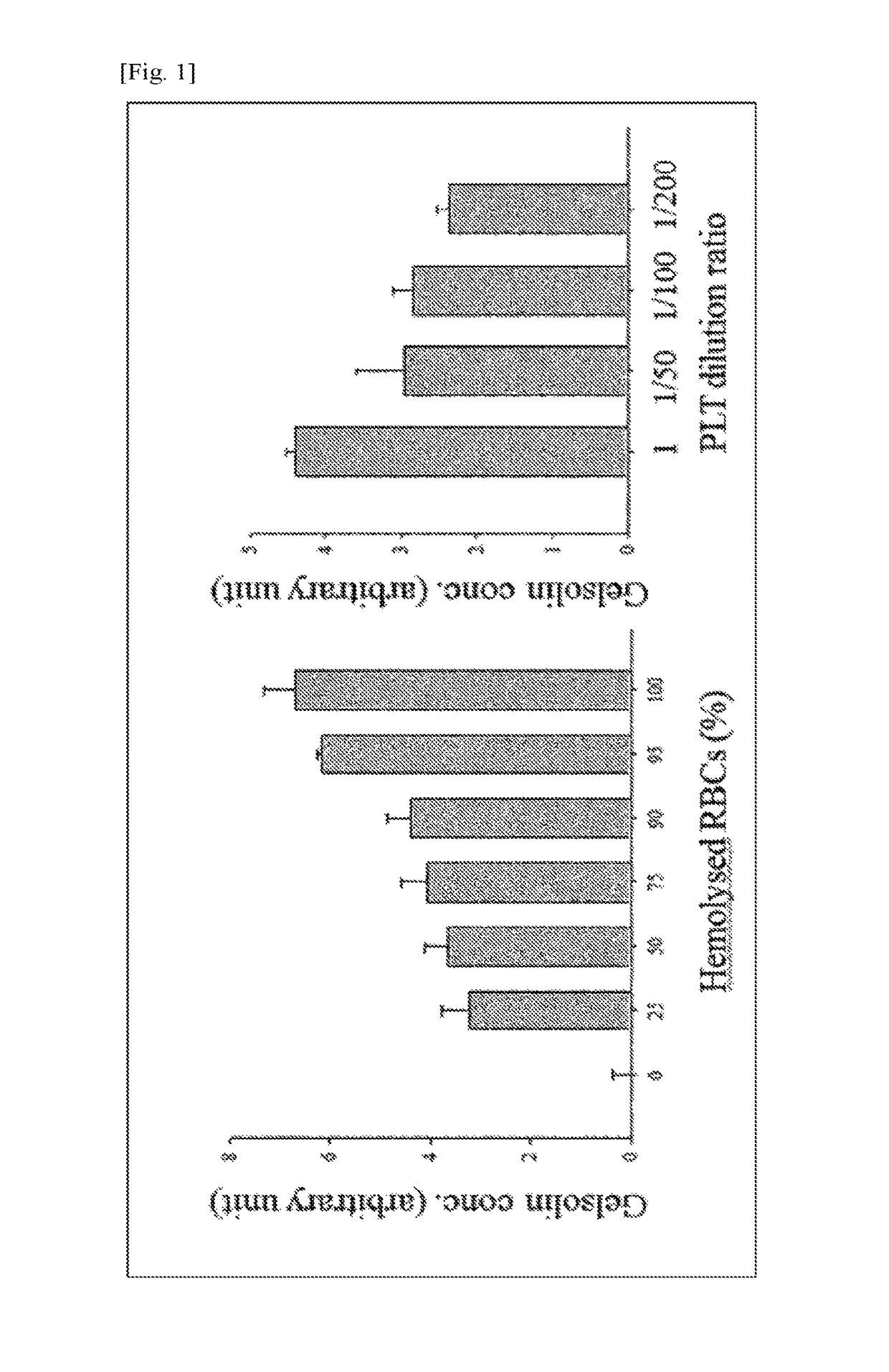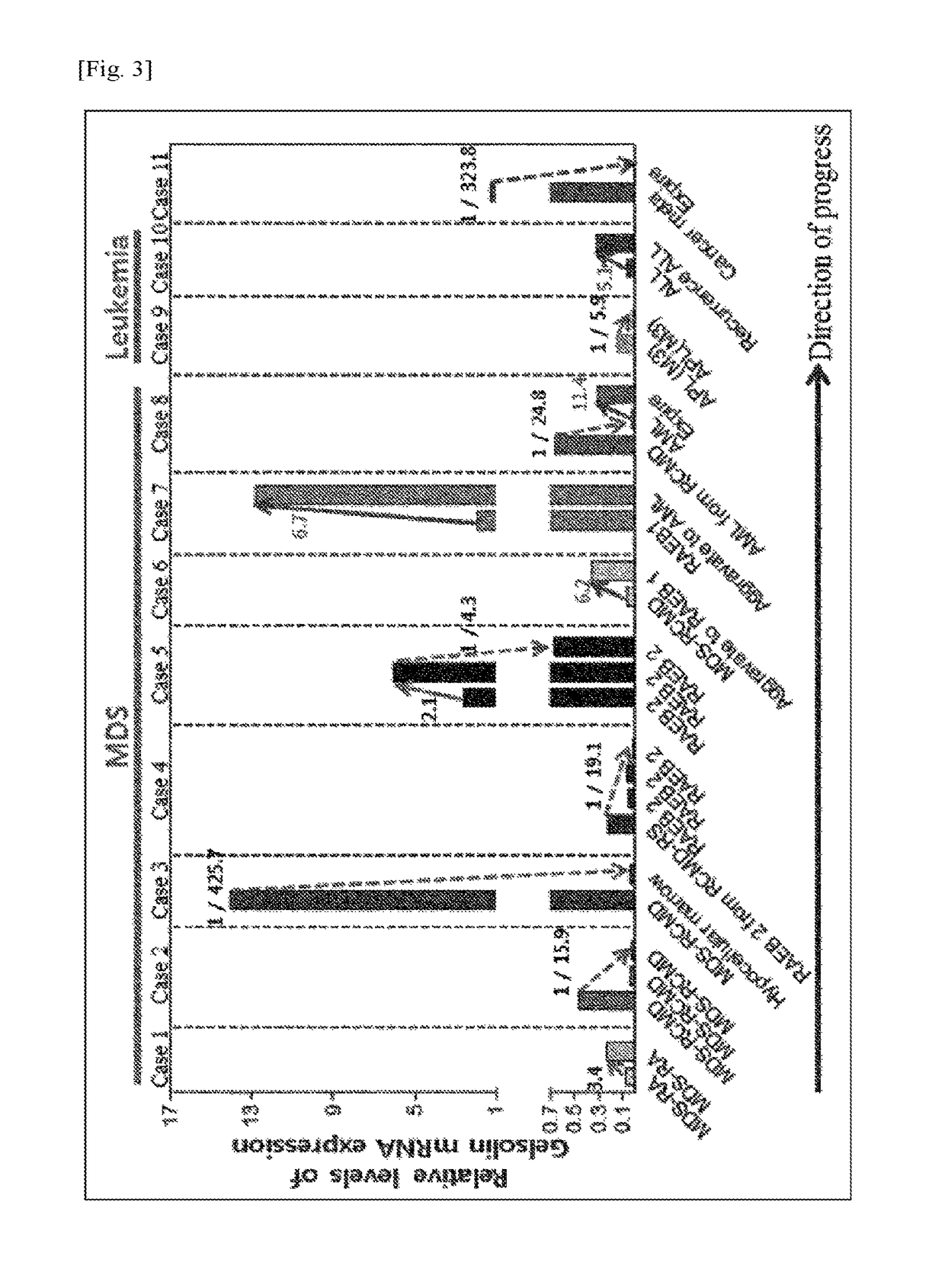Diagnosis of hematologic diseases
a hematologic disease and diagnosis technology, applied in the field of diagnosis of hematologic diseases, can solve the problems of no effective treatment agent for myelodysplastic syndrome, fatally affecting the prognosis of patients, and underestimated incidence of myelodysplastic syndrome, so as to minimize the influence of ambient factors
- Summary
- Abstract
- Description
- Claims
- Application Information
AI Technical Summary
Benefits of technology
Problems solved by technology
Method used
Image
Examples
example 1
Blood Collection
[0077]Bone marrow blood and peripheral blood (each about 3 ml) were collected from patients with hematologic tumors and stored in EDTA tubes. The samples were used for diagnosis within 6 h after sampling and were wasted. The samples were centrifuged at 227 g for 10 min to separate buffy coats. Leukocytes were present in the buffy coats of the peripheral blood and both leukocytes and erythroid cells were present in the buffy coats of the bone marrow. The expression levels of mRNA in the samples were measured by qPCR. All patients had no history of recent platelet and plasma transfusion to exclude the influence of blood transfusion.
example 2
Measurement of Changes in Gelsolin Concentration after Mixing with Hemolyzed RBCs
[0078]First, plasma was isolated from blood by centrifugation (227 g, 5 min, 4° C.). A RBC lysis buffer (BioLegend, San Diego, USA) was added to the plasma-free blood and allowed to stand at room temperature for 10 min. The supernatant was collected by centrifugation and stored at 4° C. For ELISA, the hemolysed blood was diluted with plasma until the total volume was 100 μl.
example 3
Measurement of Changes in Gelsolin Concentration after Mixing with Platelets
[0079]Platelets and plasma were isolated from normal blood by centrifugation (227 g, 5 min, 4° C.). The concentrated plasma-free platelets were diluted with plasma to different platelets / plasma concentrations. At this time, the total volume was adjusted to 100 μl.
PUM
| Property | Measurement | Unit |
|---|---|---|
| concentration | aaaaa | aaaaa |
| total volume | aaaaa | aaaaa |
| temperature | aaaaa | aaaaa |
Abstract
Description
Claims
Application Information
 Login to View More
Login to View More - R&D
- Intellectual Property
- Life Sciences
- Materials
- Tech Scout
- Unparalleled Data Quality
- Higher Quality Content
- 60% Fewer Hallucinations
Browse by: Latest US Patents, China's latest patents, Technical Efficacy Thesaurus, Application Domain, Technology Topic, Popular Technical Reports.
© 2025 PatSnap. All rights reserved.Legal|Privacy policy|Modern Slavery Act Transparency Statement|Sitemap|About US| Contact US: help@patsnap.com



